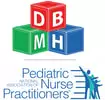Enuresis (307.6) |
Page Contributors: Thuy Nguyen, Tina Chang, RN, and Bo-Yun Huh
|
Screening
- History : Onset of problem; frequency of wetting episodes; timing of daytime and/or nighttime symptoms; constant dampness or discrete incidents; fluid consumption including amount, timing, and caffeine intake; voiding symptoms (urgency, frequency, dysuria, discomfort, quality of urine stream, and straining); stooling issues (particularly constipation), sleeping problems such as sleep apnea or nightmares, and any previous attempts at treatment. A psychosocial history should include recent stressors as well as any psychological distress caused by enuresis. Developmental history; family history of enuresis, and past medical history including urinary tract infection, sleep apnea, and neurological issues (such as tethered cord, seizures) should be noted. Withholding behaviors, such as leg crossing, sitting on heel, “potty dance,” should also be assessed (Graham & Levy, 2009).
- Physical exam: Focused abdominal, neurological, and urogenital examination as well as a rectal examination if constipation or encopresis is suspected. Diagnostic studies may include a urinalysis to rule out diabetes and urinary tract infection (Graham & Levy, 2009). Imaging may include a uroflowmetry to assess for urinary dyssynergia. A post void residual may reflect the child’s ability to empty the bladder. If anatomic issues are suspected, further imaging such as a renal sonogram or voiding cystourethrogram may be necessary (Marcdante, Kliegman, Jenson, & Behrman; 2011).
References
- Graham, K. M., & Levy, J. B. (2009). Enuresis. Pediatrics in Review, 30(5), 165-173.
- Ramakrishnan, K. (2008). Evaluation and treatment of enuresis. American Family Physician, 78(4), 489-496.
Position Papers
- AAFP's "Treatment Guidelines for Primary Nonretentive Encopresis and Stool Toileting Refusal" (Kuhn, Marcus & Pittner, 1999)
- American Family Physician - Evaluation and Management of Enuresis (2008)
- The International Association for Child and Adolescent Psychiatry and and Allied Professions (IACAPAP) - Textbook of Child and Adolescent Mental Health, Chapter 4: Enuresis (2012)
- National Guideline Clearinghouse. Nocturnal enuresis: the management of bedwetting in children and young people (2010)
- National Institute for Health and Care Excellence (NICE) Guideline for Nocturnal Enuresis (2011)
Articles
- Bernard-Bonnin, A. C. (2000). Diurnal enuresis in childhood. Canadian Family Physician, 46, 1109-1115.
- Caldwell, P., Edgar, D., Jones, M. P., Hodson, E., & Craig, J. C. (2009). Treatment of enuresis: alarm monotherapy versus a multi-modal treatment approach in a multi-disciplinary clinic. Australian and New Zealand Continence Journal, 15(3), 61-67.
- Evans, J. (2001). Evidence based management of nocturnal enuresis. British Medical Journal, 323(7322), 1167–1169.
- Fleming, E. (2012). Supporting children with nocturnal enuresis. Nursing Times, 108, 41, 22-25.
- UpToDate - Nocturnal Enuresis in Children: Management (2014)
- Wraige, E., & Borzyskowski, M. (2002). Investigation of daytime wetting: when is spinal cord imaging indicated? Archives of Disease in Childhood, 87, 151-155.
- "Primary Nocturnal Enuresis: Current Concepts" (Cendron, 1999)
Resources
|
FOR PROVIDERS
|
FOR FAMILIES
|
